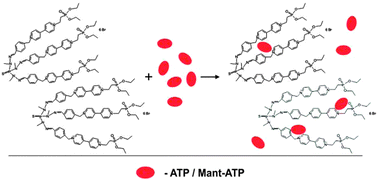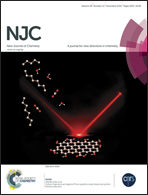A viologen phosphorus dendritic molecule as a carrier of ATP and Mant-ATP: spectrofluorimetric and NMR studies†
Abstract
In this work, the interactions between a viologen phosphorus dendrimer of generation 0 (VPD) and ATP or 2′-/3′-O-(N′-methylanthraniloyl)-ATP (Mant-ATP) were investigated by NMR and fluorescence spectroscopy methods. ATP and Mant-ATP were used as model molecules of purine and pyrimidine nucleoside analogues (NAs), which are antimetabolites commonly used in anticancer therapy. Complexes of VPD with NAs may help to overcome severe limitations of NAs associated with their low solubility, stability or resistance to cancer cells. The aim of the presented study was to evaluate the stoichiometry and the mechanism of formation of complexes between dendrimers and nucleotides: ATP and Mant-ATP. Moreover, we examined the efficiency of complex formation in relation to temperature, the type of solvent, NaCl concentration, pH and environment polarity. It was observed that viologen phosphorus dendrimers form complexes with ATP and Mant-ATP with high efficiency. Obtained complexes are stabilized by electrostatic and aromatic–aromatic interactions as driving forces.


 Please wait while we load your content...
Please wait while we load your content...